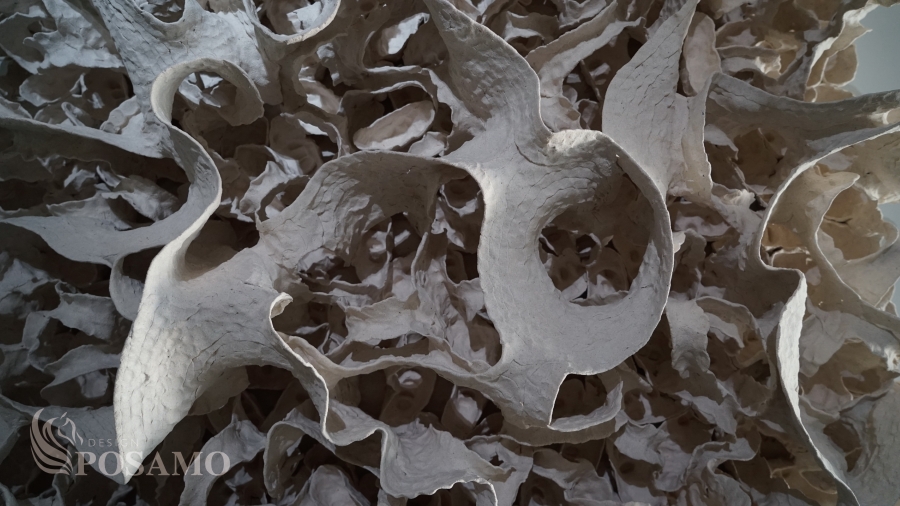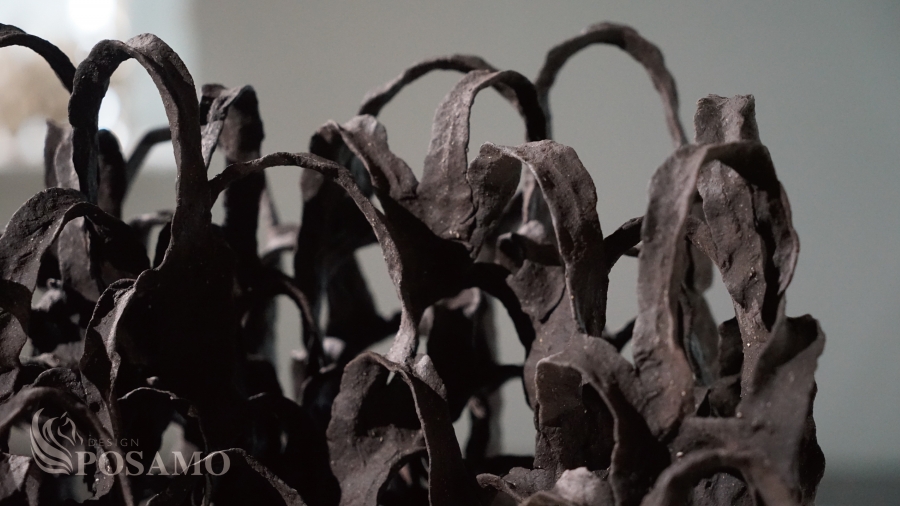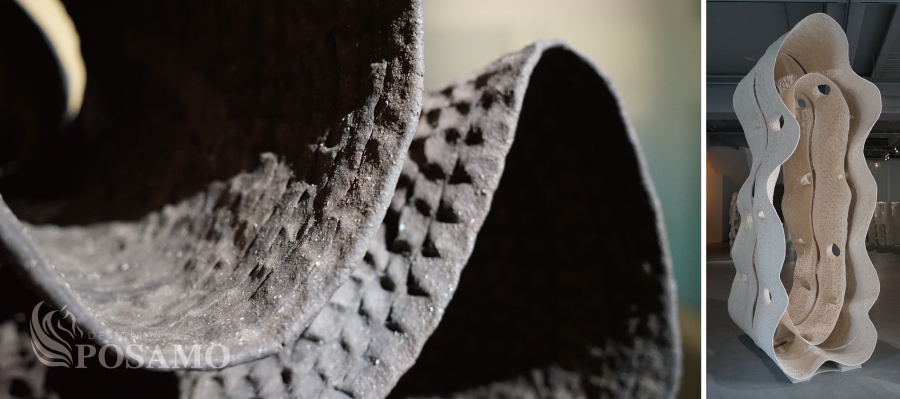當代藝術太陽神
The Apollo of Contemporary Art
 |
|
Helios HiOK– Hsu Yung Hsu’s solo exhibition is presented with innovation without looking backwards, expanding horizons after 20 years of creating large art pieces. The afternoon sunlight falls on these sculptures that are beyond scale, providing the best representation for the simplicity and pureness of space. The interior space does not have excessive lighting, allowing a stunning combination of light and sculpture.
「Helios旭HiOK」─ 徐永旭2015年個展,不再回顧的邁進創新,創作二十餘件大型作品展開全新的里程。午後的光影斜灑在這些超乎尺度的雕塑上,展場空間的簡潔純粹做了最好的襯托,室內除了陽光沒有多餘的照明,才得以讓光線和雕塑合作得令人驚艷。
|
|
|
The early works of Hsu Yung Hsu are mainly ceramic containers for carrying objects. Hsu Yung Hsu expanded his scale into containers large enough to hold a human body, pulling the viewer closer in. The plasticity of clay mixed with water is Hsu’s reason for choosing it as a material for creating artworks. The soft texture records the entire creative process, including each fingerprint and pressure. Each action of pressing, pressuring, squeezing, tearing, pinching, dotting, twisting, folding, and piling is documented. The body is also the most direct tool for construction and deconstruction. Work is formed through movement, encompassment, and occupation of the body; the creative medium originates from every part of the body.
早期的陶製品以容器為主,用以承載物品,而徐永旭將尺度放大到看似足以容納身軀,藉此拉近了觀者的距離。而陶土與水融合後的可塑性是徐永旭選擇以泥土為創作素材的原因。柔軟的質地能記錄整個創作過程中所有的紋理與力道,透過手指的按、壓、擠、撕、捏、點、磋、疊、推等等方式留下印記;而肢體為最直接解構及構築的道具,透過身體的走動、環繞、占據等等來形塑或布局,創作媒介都出自於身體的每一部分。
|
|
|
|
|
The works of Hsu Yung Hsu are a departure from traditional pottery, and can even be explored through the viewpoint of spatial sculpture. In 2006, Hsu Yung Hsu proposed a watershed concept named “anti-ceramic,” which abandons previous restrictions on scale and thickness and emphasizes “extreme largeness and extreme thinness” of the work. The dramatic effect of the thinness of clay can only be experienced on-site, and “extreme thinness” can sometimes be achieved through “extreme largeness.”
徐永旭的作品早已跳脫了傳統陶藝的領域,甚至以空間雕塑的角度來探討。2006年,徐永旭提出了「 反陶 」的自我分水嶺概念,擺脫過去陶瓷所限制的尺度與厚度,強調作品型式的「極大與極薄」,置身現場時能感受到戲劇性的尺度才能呈現出陶土的薄度,甚至能以「極大」造就「極薄」。
|
|
|
This intimate and contrasting relationship exists in a sense almost like tightrope walking; the biological extension and stretching can be seen throughout the works. Due to the high possibility of clay collapsing during the production process, a change in direction must occur before collapse, partially forming the curves seen in the works, which all possess an organic beauty that derives from the material’s original nature.
這樣親密無間卻對比的關係存在者猶如走鋼索的危機感,在作品中能見到彷彿生物般伸展或蔓延的曲線,由於泥土在製作過程中容易坍塌,所以在倒塌之前必須繞向另一個方向,局部產生了作品裡所看到的曲線,是那麼依循材質的原則所自行衍生的有機美感。
|
|
|
|
|
Enter the works of Hsu Yung Hsu and see the “repetition” and “stacking” of single elements. This process is not unlike animals “nesting” in order to satisfy the most basic survival instinct, enabling us to experience the flow of an “instinctive life force”. When placed within an urban environment, they are like building rows, while the gaps between units are like cells and stoma, providing the bustling people working non-stop within the city a place to rest, catch their breath, and release mind and body.
走入徐永旭的作品,能看到單元體的「重複」與「堆疊」,過程似如生物為了最低限的需求而「築巢」,讓人感受一股「本能性的生命力」。當它置身在城市其中,彷彿一棟一棟的棲居建築,而單元與單元之間的縫隙如同生物的細胞與氣孔,像是為城市裡周而復始、永不停歇的人們提供另一個歇憩喘息的空間,獲得身與心的釋放。
|
|
| Editor / Creative and Research Department |
編輯/十邑創研部 |
| Date / November 03, 2015 |
日期/2015-11-03 |
|





